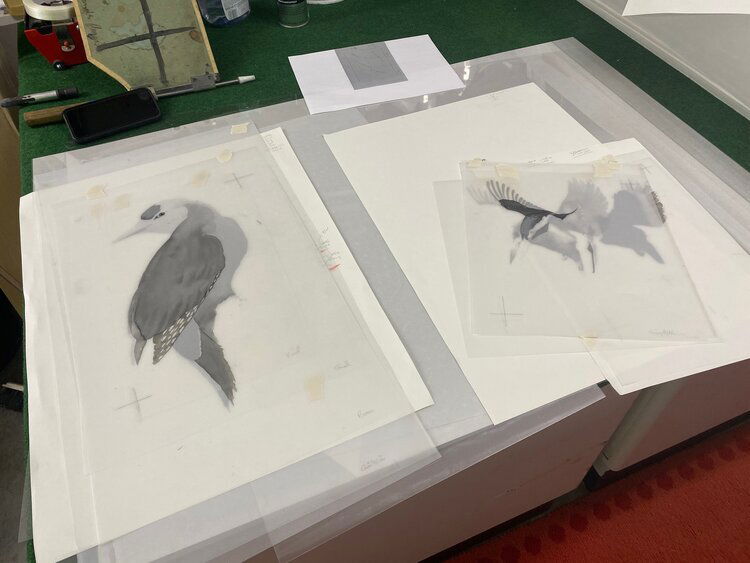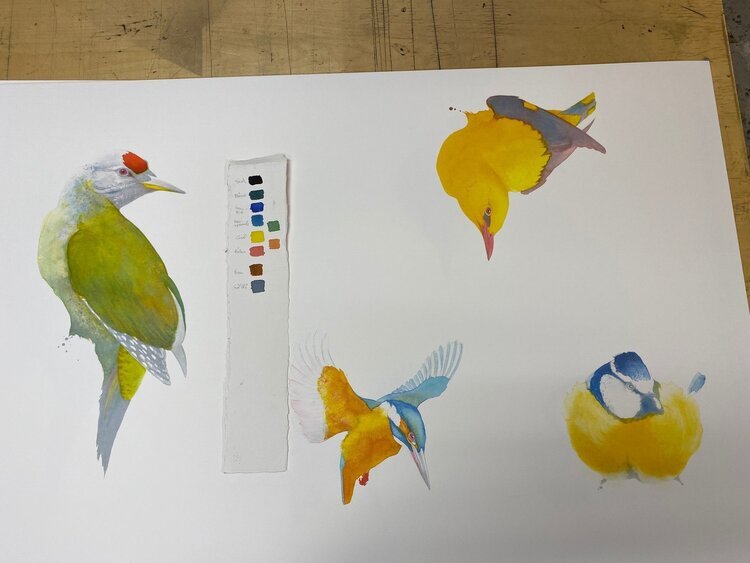
The process of contemporary lithography includes the transfer of a painted surface of a foil sheet to metal plates that are later put through the printing press, applying a single colour at a time. Each sheet would represent one colour. The artist paints the picture on a plastic foil sheet with a grained surface using black gouache paint. Each sheet represents a specific layer of colour. The painted surface is then transferred to a metal plate by being placed on the light-sensitive surface and exposed to UV-light.

The metal sheet is then attached to the press where the artist alongside the print press operator develop the appropriate colour with which the print rollers are soaked. When the preparation is completed, the paper is ready to be processed through the printing press, applying the first colour.

After a trial run, and necessary adjustments and corrections are applied, the vital first colour is printed. This step is then repeated for each additional colour applied to create the final image. The process can at times be performed up to 10, sometimes 15 times, each time adding new colours and shading to the image. When the final colour has been applied the end result is carefully examined, numbered and signed by the artist. An edition published by Edition Vulfovitch usually consists of 150-300 copies.


Images: Process of printing artist Karl Martens Woodpecker, Kingfisher, Oriole and Tit.
Find out more about Björn Lumphé and Lumphé Litografiska here.